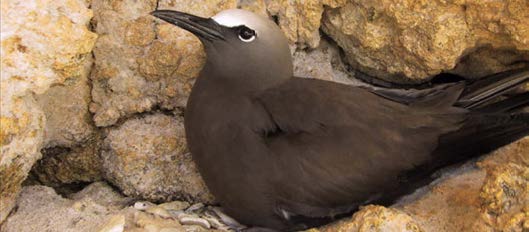A management plan, which is a regulatory obligation for all nature reserves, serves as the blueprint for the management team. This is an essential document for the organization, follow-up, and evaluation of the management of each Réserve. As the first such plan for the Réserve Naturelle de Saint Martin had expired, a second version has been drafted. The Réserve entrusted this important task to Amandine Vaslet, a doctor of marine biology.
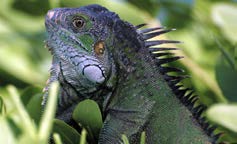 The evaluation of the first management plan proved very postitive, as 61% of the 104 items on the outline were completed, and 22 additional items were more than 75% complete. Only four items were not undertaken, including the reintroduction of the Lesser Antilles iguana, Iguana delicatissima, due to the explosion of the common Iguana iguana population, a species that is no longer protected but cannot be hunted.
The evaluation of the first management plan proved very postitive, as 61% of the 104 items on the outline were completed, and 22 additional items were more than 75% complete. Only four items were not undertaken, including the reintroduction of the Lesser Antilles iguana, Iguana delicatissima, due to the explosion of the common Iguana iguana population, a species that is no longer protected but cannot be hunted.
The new management plan for 2018-2027 was created using a new methodology put into place by the French Agency for Biodiversity and Réserves Naturelles in France, and validated early in 2018.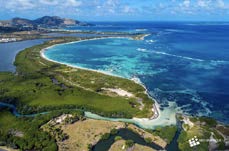
This methodology places the evaluation of defined projects at the heart of the management plan.
It comprises three sections:
- Diagnostics and evaluation of the Réserve Naturelle
- Management of the Réserve Naturelle (with a project chart)
- Action items for each of the 125 projects listed
In keeping with this new methodology, all projects are divided into eight different areas of activity, including:
- Surveillance of the island and policing of the environment
- Awareness and continual follow-up of natural sites
- Creation and maintenance of reception facilities
- Protection of the natural heritage
- Management and support activities
- Creation of marketing and teaching materials
- Reception and activities services
- Participation in research
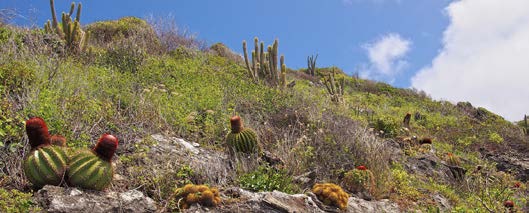
The principal goal of the 2018-2027 management plan is the preservation of the island’s biodiversity and the various marine ecosystems, on land and along the shores within the nature reserve.
In addition to this central goal, nine other long-term objectives —compared to seven in the prior plan— were defined for the protection of our natural heritage.
The seven goals of the prior plan were:
- Improving awareness about protected sites and species
- Managing the impact of mankind on protected sites
- Extension of the management of the Réserve Naturelle for new sites
- Restoration of damaged spaces and species
- Environmental communication and education
- Optimization of means to ensure the quality of all projects
- Renforcement of regional integration
The new long-term goals are:
- To promote the conservation of the coral reefs and related species
- To promote the conservation of seagrass beds and related marine plant species
- To promote the conservation of the sea turtle population
- To promote the conservation of nurseries for sharks and rays
- To maintain or improve local conditions for marine mammal populations
- To maintain or improve local conditions for nesting bird populations
- To maintain or improve the ecological health of the salt ponds
- To promote the conservation of drought-resistant vegetation
- To ensure good conditions for the reintroduction of the Lesser Antilles iguana
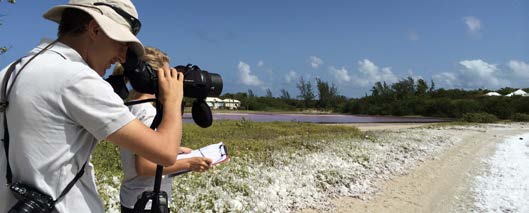
At the same time, five key factors for the success of these projects are based on the daily management of the Réserve Naturelle, bringing the total number of goals to 14.
These five key factors are:
- Respecting the regulations and make sure the human activities allowed are compatible with the goals of the Réserve
- Ensuring environmental communication, awareness, and education
- Optimizing management means
- Improving knowledge about our natural heritage and function of ecosystems
- Reinforcing local and regional commitment to the Réserve
There are 125 actions defined and planned on the project chart, and identified by three types of indicators that allow for the evaluation of the various actions, to follow-up and make sure the actions are completed and efficient.
The three types of indicators:
- Status indicator: follows the evolution of our natural heritage
- Indicator of outside pressure: characterizes threats that can impact our natural heritage
- Achievement indicator: reports on the ongoing completion of each action
Each action is described on a factsheet that repeats the goals of the activity: its location and its timetable, as well as the human, material, and financial means required, any potential financing, and the indicators selected for its evaluation.
The following are a few examples of the 125 actions listed on the new management plan:
- Scientific follow-up and evaluation of the health of the coral ecosystems including the reefs, the fish, and the invertebrates.
- Public awareness efforts to inform the population about the protection of marine mammals through public conferences, academic programs in the schools, plus the creation of informational signage and posters.
- Evaluate and follow the Melocactus intortus and gaïac populations, from scientific study to mapping of land-based vegetation formations in the Réserve Naturelle.
- Respect the regulations concerning the practice of human activities that are compatible with the goals of the Réserve, especially by publishing and distributing marketing materials on regulations concerning our natural heritage.
- Creation of the Maison de la Réserve Naturelle as part of the Caribbean Institute for Insular Biodiversity.
A summary of the management plan can be consulted on the website for the Réserve Naturelle de Saint-Martin.


